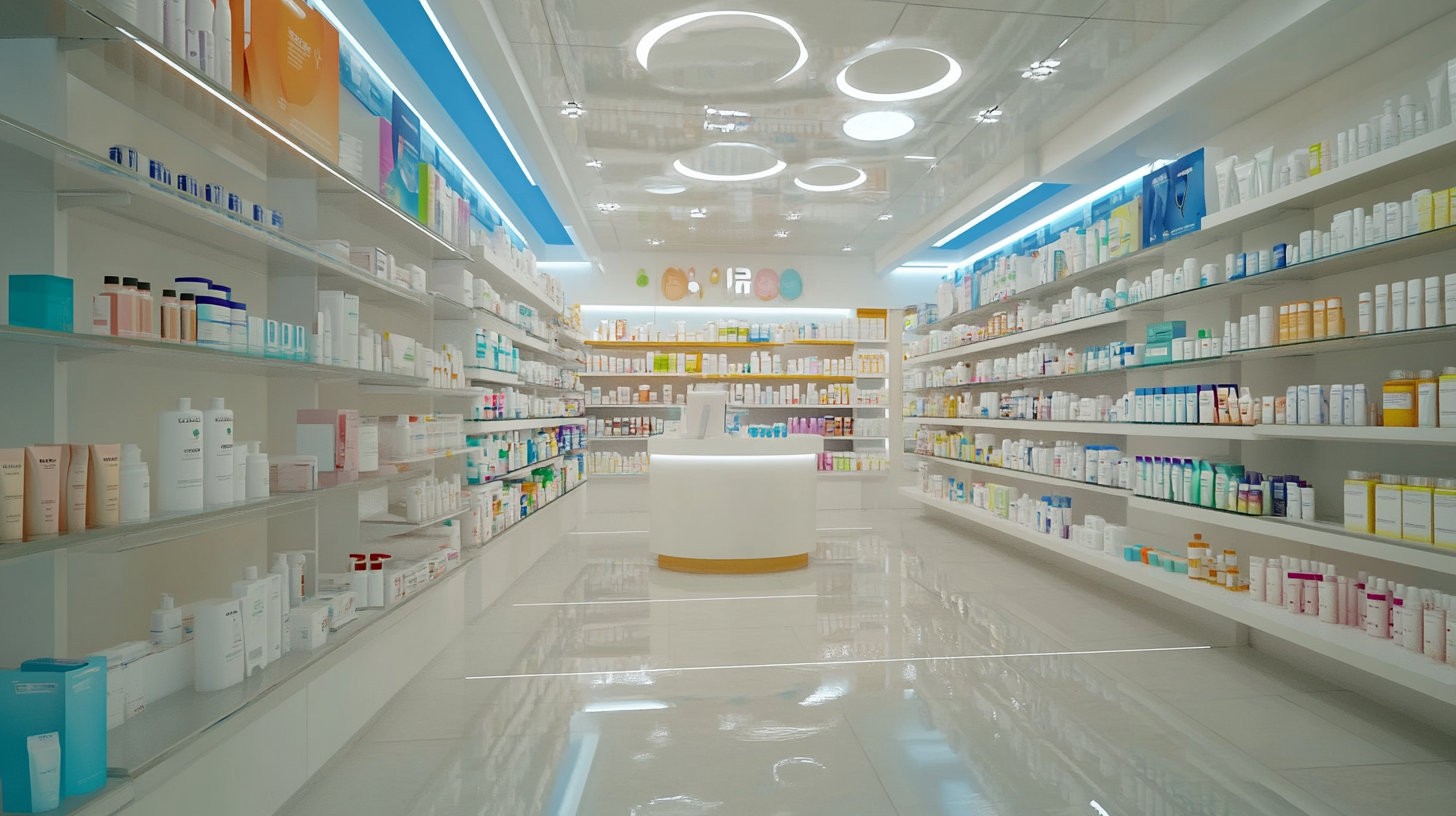Blog
Exploring the Advanced Features of Quality Healthcare Products for Global Buyers
The demand for Quality Healthcare products has soared higher than it has ever been due to a worldwide focus on health outcomes and patient safety. According to a World Health Organization report, almost 80% of people view access to high-quality medical products as important, indicating that awareness is growing regarding the relationship between product standards and overall health. Additionally, with predictions estimating the global healthcare market to touch $11.9 trillion by 2027, buyers are increasingly looking for advanced features of these products that comply with regulatory standards while being efficient and effective in the delivery of healthcare.
In such a fast-paced environment, it becomes all-encompassing where aspects like the defining criteria for Quality Healthcare products. An article recently published in the International Journal of Healthcare Management observed that the introduction of innovative technologies like telemedicine and AI-based diagnostics promotes patient engagement and care quality. Moreover, since personalized medicine is fast becoming a reality, quality now matters more than ever in establishing that the patients receive the right treatment solutions. This blog will elaborate on those core advanced features of Quality Healthcare products that are redefining the future of healthcare and equipping global buyers with the competitive advantage to survive in this changing marketplace.

The Rise of Telemedicine: Innovations in Remote Patient Monitoring for Quality Healthcare
Telehealth is growing rapidly, increasingly becoming a phenomenon that transforms healthcare. One element evolving in this wake is the emerging telemedicine technologies, which are critical enablers of quality care-near-empty remote patient monitoring. Once a luxury, deployment of sophisticated health-tracking devices dedicated to chronic disease management is set to become commonplace, with soaring demand from the global health sector for these technologies. Statistically, the smart hospital sector alone was valued at ~42.8 billion dollars in 2023; it is estimated to grow at a compound annual growth rate (CAGR) of 19.6% from 2024 through 2032. This growth is mainly because improvement is needed in how care is provided to patients, along with operational efficiency. Therein, telehealth steps in. Thus, recent advancements are very promising in the area of remote monitoring technologies, for instance, where various organizations are spearheading projects with regard to wearable devices that target virtual healthcare programs-a level of non-communicable disease burden reduction and improvement in global health. Reports indicate that the remote healthcare solution markets will be soaring past an approximate $2.875 billion value by 2033 in regions such as Germany alone, indicating growing appetite towards new and improved healthcare delivery modes. Alongside telemedicine growing, this drive is also aided by partnerships between telehealth and technology companies that enable healthcare systems to adopt telemedicine solutions. Integration of digital health technologies within hospitals, such as the launch of remote consultations in hospitals in Chengdu, further evidence increased adoption by stakeholders. The way health systems keep focusing on sophisticated equipment and innovations suggests that the future of telemedicine will indeed be secured and promises-improved patient monitoring and increased healthcare quality.

Understanding Regulatory Standards for Quality Healthcare Products in Global Markets
Upholding regulations for quality healthcare products is very crucial for the global buyer in the continuouschanging world of business so that the products in their consideration are in compliance and safe. Safety and efficacy testing requirements have continued to grow, perhaps more than ever before in the industry, and this regulatory outlook is now making itself felt in the strong growth predictions made for medical device testing services. In a recent development, it has been predicted that the global medical device testing services market shall amount to $8.6 billion by the year 2024, and a CAGR of 8.8% is expected from 2025 up till 2034. Such expanding stats witness that the interest paid by the regulators is rising as well vis-à-vis the better safety and quality assurances of medical devices.
Contrarily, the medical device packaging validation market is also expected to be growing at a strong pace to reach almost $602 million by the year 2033, with a CAGR of about 8.59% from the year 2023. Thus growth emphasizes the importance of strict validation protocols that follow international regulatory expectations to assure that the packaging protects the devices and conforms with global market standards. The Asia-Pacific region is expected to show a major leap in development during this period owing to increasing investments in healthcare infrastructure and rising demand for novel healthcare solutions.
The World Health Organization has established this regulatory assessment framework to provide a broad guideline to best harmonize the development and approval processes of healthcare products. The understanding of the regulatory standards in this field is instrumental in allowing the buyers to effectively maneuver through the global market so that the healthcare products they buy will be able to match the safety and quality determined by the benchmarks.

Evaluating the Role of AI in Enhancing Healthcare Product Quality and Efficiency
Inaugural Digital Ecosystem Innovation Conference 2025 for the healthcare domain demonstrated the heavy weight that AI is now putting on quality and efficiency in healthcare products. The focal theme was "Intelligence Leading the Future," and the whole structure presented was on how AI technologies can actually disrupt product development and delivery mechanisms in a healthcare setting. The participants were able to see multiple innovative solutions that are directed at achieving process efficiencies and better patient care while also attending to quality assurance in healthcare products.
The conference put much emphasis on AI-driven models, mainly on how the technology could complement existing healthcare solutions. For example, companies that implemented AI with advanced frameworks reported improved accuracy, responsiveness, and operational efficiency. The integration of AI does not only serve to reduce errors but also encourages a culture of continuous improvement in healthcare quality. And with the quickening pace of adoption of AI, this significance emphasizes the need for ethical standards to govern its use in such delicate medical fields.
In addition, conferences such as the CMEF provide vital opportunities for global buyers to interface with industry leaders and assess the latest healthcare innovations. The need for technology to build a "moat" around healthcare quality is paramount. These forums remind the AI developers, healthcare providers, and government agencies about the essential collaboration needed to translate these innovations into actions that belong to the market while prioritizing patient safety, care, and standards.

Navigating Supply Chain Challenges in the Global Healthcare Product Marketplace
Navigating the complex landscape of supply chains in global healthcare products means keeping up not just with the features of advanced healthcare but also having an awareness of the supply chain mechanics that run counter to these features. In a market characterized by soaring demand and stringent regulatory requirements, challenges in the supply chain can seriously influence both availability and quality of products. Therefore, such challenges need to be judiciously crossed by the global buyers to ensure that their promised quality healthcare products are efficient and effective delivery in the intended marketplace.
Supply chain variability in healthcare products especially relates to the different regulatory entities in different regions. Each country has its own compliance standards that can result to bottlenecks if suppliers are not well versed with local laws. This creates a strong case for a global buyer's strategy that ties into relationship building with trusted suppliers whose history shows effectiveness in maneuvering through these challenges.
The global disruptions such as pandemics or geopolitical tensions impact supply chains hugely. Buyers must embrace technology and data analytics to improve visibility along the supply chain to quickly respond to sudden unprecedented disruptions. With advanced analytics, global buyers are better able to predict possible disruptions and adapt their purchasing strategies accordingly, maintaining a steady inflow of quality healthcare products into their markets.
Case Studies: Successful Implementations of Advanced Healthcare Products Worldwide
From a health care standpoint, advanced products have been valuable to advancing challenges for both medical practitioners and patients. Recent research from Grand View Research revealed that the whole health market is predicted to reach $665 billion by 2026 mainly because of technologies in healthcare innovation. The said growth is most certainly be accelerated by successful case studies that showcased new health products and use across various regions, demonstrating how the products have impacted patient outcomes and operational efficiencies.
I am going to take you to one very successful event in Germany where telemedicine platforms were added to primary healthcare. According to a paper published in the Journal of Telemedicine and e-Health, the use of such telemedicine platforms results in a 30% reduction in patients' waiting times and increases the availability of care for rural populations. Such a case proves that advanced solutions in healthcare would open not just access but also services provided.
Another example might be India, where mhealth applications must work to improve maternal health so significantly. The World Health Organization has reported that nearly 200,000 consultations were made facilitated by such programs in under-served areas downward with a 20% reduction in maternal deaths; imagine what such implementations can do in terms of the transformative power of advanced products towards better health outcomes and solving health delivery gaps.
In this way, potential global buyers of advanced healthcare products can make significant purchases from studying the results of such successful implementations. The data paint a very clear picture regarding necessary investments in modern health solutions for the future demand of their both patient and provider needs and a hopeful global transformation towards a more effective and responsive healthcare system.